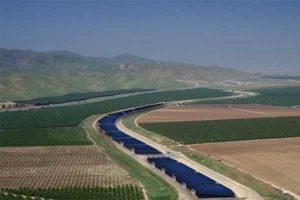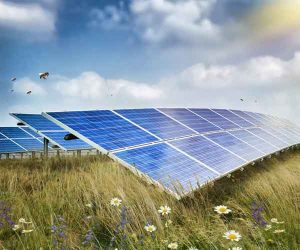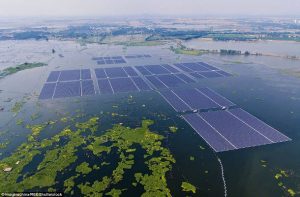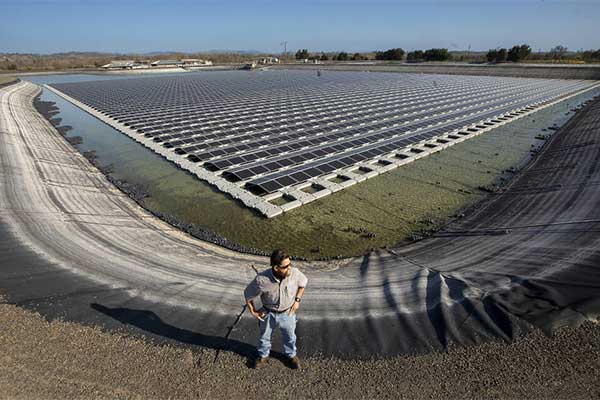- Corporations, governments, and nonprofits around the world are implementing creative solar applications to address the climate crisis. In addition to offering energy resiliency and reliability, many of these innovative applications provide secondary benefits.
- Some of these applications demonstrate that solar can effectively be deployed throughout urban, suburban, and rural areas.
- We’ll outline six of these – and cover why they are important innovative applications.
One of the chief benefits of renewable energy is its decentralized nature, allowing for energy resiliency and innovative deployments in places where power otherwise couldn’t be produced. By being creative and relying on the private sectors’ R&D, governments and businesses alike can weave solar energy seamlessly and cost-effectively throughout urban and rural settings – a feat that’s already been accomplished in a multitude of innovative projects.
Below, we’ll outline six of these – and cover why they represent such marked innovations.
1. On the side of highways

Visualization rendering of Lexington, MA project. (Ko-Solar)
Starting off our list is a public-private venture between Massachusetts’s department of transportation (MassDOT) and Ko-Solar, PowerOptions, and Solect Energy to attach solar panels to highway noise barriers in Lexington.
Mohammad Siddiqui from Ko-Solar – the firm that designed the installation – said, “[the project reduces [Lexington’s] carbon footprint [and makes] something that’s not very visually pleasing look better, and captur[es] energy.”
“It’s very innovative and we’re hoping that the pilot proves it’s something that should be rolled out nationwide,” said Scott Bosworth, undersecretary of MassDOT.
The project will supply enough power for roughly 120 homes – though the potential for global applicability is exceptionally high. Particularly in the United States – where per capita (individual) carbon footprints are among the highest in the world – there are endless highways that fit the criteria to produce green energy. Right now, such spaces are devoid of any real economic or environmental benefit, but this doesn’t have to be the case, as this joint venture aptly demonstrates.
2. California’s river canals

Artist rendering of a solar canal system for California. (Solar Aquagrid LLC, CC BY-ND)
Found in California’s central valley, a prototype is being developed by researchers at the University of California, Merced, that would see canals covered with solar panels to prevent evaporation and generate clean electricity. Estimates suggest that if all of the state’s 4000 plus miles of canal were to be covered, more than 65 billion gallons of water would be saved each year.
California already experiences terrible droughts, and as climate change worsens water availability, this solution could offer a lifeline to countless communities. And, of course, the scalability of such a project is massive – and imperative considering the importance of preserving freshwater resources.
This innovation has the potential to generate state-wide savings, assist in meeting climate goals, and benefit local biodiversity by saving water and killing aquatic weeds.
3. Agrivoltaics

Wide-scale installation of agrivoltaic systems could lead to an annual reduction of 330,000 tons of carbon dioxide emissions in the U.S – the equivalent of 75,000 cars off the road per year – and the creation of more than 100,000 jobs in rural communities, while minimally impacting crop yield, the researchers say. (Oregon State University)
In an ironic twist, solar shading can actually increase crop yields while saving water on agricultural land. While plants require sunlight – many become stressed under high-photon environments. Kale, tomatoes, garlic, beets, lettuce, carrots, radishes, and more flourish under solar panels. By offering additional income through solar profits, increased yields, and reduced expenses, agrivoltaics provide farmers with an opportunity to benefit themselves and the planet.
“By growing these crops in the shade of solar arrays, we reduce the amount of that intense sunlight that bakes off the water and stresses out the plant,” said Greg Barron-Gafford, an earth system scientist at the University of Arizona.
Increasingly, agrivoltaics are making their way into the mainstream, though more outreach to farmers is needed to increase adoption rates. The obvious economic and environmental benefits make this technology a no-brainer for those growing the appropriate crops.
5. Pollinator-friendly solar farms

Argonne researchers hope that we can rehabilitate bee and butterfly populations by allowing them to live at solar energy facilities. /Image by Argonne National Laboratory.
Most of the time, solar companies don’t think about what’s going on underneath the panels – other than making sure there’s no overgrowth. It’s even common for gravel or turf to be laid down – or to spray chemicals to quickly kill residual weeds. But some solar companies – recognizing the need for greater environmental stewardship, have begun growing bee-friendly plants underneath the panels.
Successful pollinator-friendly solar installations create biodiverse habitats that sequester carbon and improve soil quality. Additionally, they can benefit local agricultural production by increasing natural pollination.
Ultimately, governments need to offer monetary incentives for fostering biodiverse habitats to ensure the mass adoption of sustainable practices. It’s also possible, however, that agreements between local agricultural groups and solar developers could be arranged. While it’s hard to place a monetary value on ecosystem services – it needs to be done in some way or another to rebalance the world’s relationship with nature.
6. Floatovoltaics

The impressive plant is built on the surface of a reservoir, which has been converted. (Daily Mail)
Rounding out this list of solar-related innovations are floatovoltaics – or floating solar panels. One of their key benefits is that they avoid taking up precious land real estate. The world’s first floatovoltaic system was installed at a California winery in 2008, though more than 100 now exist worldwide. Frequently, they’re deployed on water treatment plants or other underutilized water bodies.
“This is a strong tool in the toolbox that we can utilize for expanding our photovoltaic portfolio in the U.S.,” said Robert Spencer, a data scientist at the National Renewable Energy Laboratory.
In addition to costing less than traditional land-based panels – a result of not having to clear land or treat soil – the cooling effect of water can boost panel performance by as much as 22%. Shading also helps to prevent excess evaporation and toxic algae formations.
There are, however, questions about the long-term efficacy of floatovoltaics – and their potential ecological impact.
“The biggest barrier to floatovoltaics are all the unknowns,” said Spencer, though he added that having floatovoltaics’ huge potential now quantified will help motivate scientists to tackle these research questions.













Comments